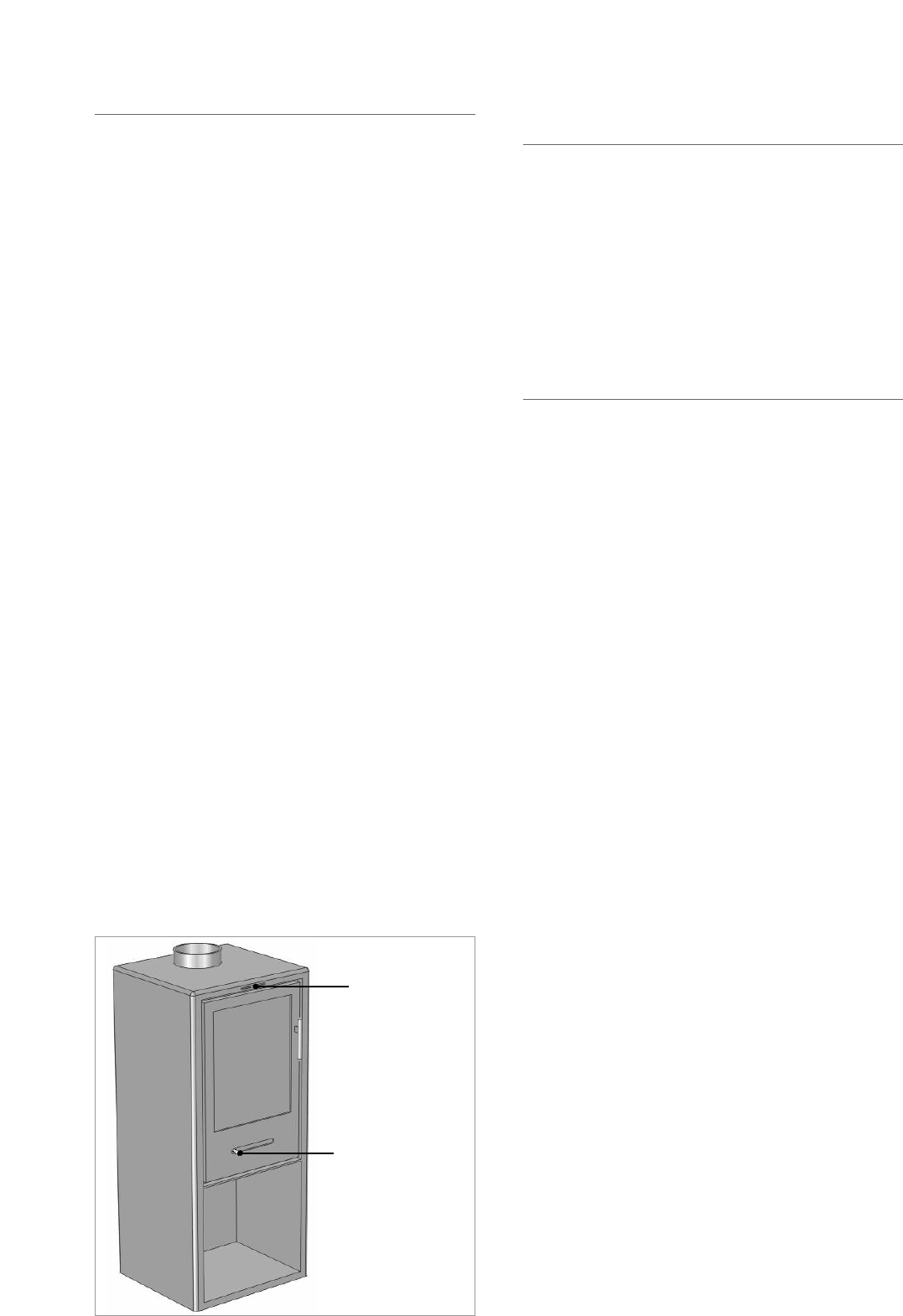
OPERATING INSTRUCTIONS
1. GENERAL
1.1 This stove is designed for domestic heating and should
only be used for this purpose, and in accordance with the
manufacturer’s operating instructions.
1.2 It should be installed by a competent installer (HETAS
registered GB only), in accordance with all local
regulations, including those referring to national and
European standards.
1.3 The stove should only be used to burn approved fuels
and should not be used with liquid fuels or used as an
incinerator.
1.4 As with all heating stoves, the surfaces will become very
hot when in use, therefore due care should be taken
when near the stove. If it is to be used in the presence of
young children, elderly or infirm persons a suitable
fireguard should be used. Care should also be taken with
the placement of combustible items near the stove as
conducted and radiated heat could cause a fire hazard.
Stovax offer a wide range of firescreens and sparkguards,
along with a hearthgate system designed to offer full
protection for a range of stoves and fireplaces. Your
Stovax dealer can advise you on these products.
1.5 The additional ventilation required for the safe use of this
stove should be kept free of any obstructions, both inside
and outside the building, at all times.
1.6 Have your Stovax product serviced annually by a
competent service engineer, and if repairs are required
use only Stovax approved spare parts.
1.7 Do not make unauthorised modifications or changes to
the stove.
1.8 SERIAL NUMBER This number will be required when
ordering spare parts or making warranty claims.
1.9 AIR CONTROLS (typical layout)
2. USING THE STOVE FOR THE FIRST
TIME
2.1 When new, it is best to burn the fire at a low output for
the first few days of use. This will allow the construction
to settle and all fixing glues and paint to fully cure.
2.2 Avoid touching the paint during the first period of use.
2
.3 During this time the stove may give off some unpleasant
o
dours, and we recommend that you keep the room well
ventilated during this period to avoid a build-up of fumes.
3. BURNING WOOD
3.1 Open the Airwash control fully and open the Primary
air control
to approximately 25% open.
3.2 Place some pieces of firelighter or dry crumpled paper on
the grate and cover with some small pieces of dry
kindling wood. Light the paper or firelighters.
3.3 To avoid the build-up of condensation on the door glass
it is advisable to leave the door slightly open as the fire
establishes and the glass warms.
3.4 As the fire becomes established add larger pieces of wood
and fully close the door.
Do not leave the stove with the
door open as this could over-fire the stove and cause
permanent damage.
3.5 As the fire becomes established, close the Primary air
control
and control the burn rate using the Airwash
control
only.
3.6 To burn wood efficiently it is best to allow a bed of ash to
build-up on the grate, or the base of the stove, and
control the combustion using the
Airwash control only.
3.7 Before re-fuelling the stove it is advisable to first rake the
embers evenly over the firebed then open the
Airwash
control
fully for a few minutes, to establish a glowing bed
before adding new logs.
3.8 Allow the new logs to burn at high output for a few
minutes before adjusting the burn rate, with the
Airwash
control
, to the desired setting. It is best to refuel little
and often to maintain clean and efficient burning
.
3.9 The ideal control settings to suit the particular
installation and personal preferences will be established
by experience in using the stove.
3.10 It is not recommended to load large amounts of logs and
burn with the Airwash control on low settings for long
periods of time as this will reduce the effectiveness of the
glass cleaning effect of the airwash. Also this will cause
large a build-up of tars and creosotes in the stove and
flue system.
AIRWASH
CONTROL
Above door
PRIMARY AIR
CONTROL
On door
See instructions for
detailed use of
controls
13


















